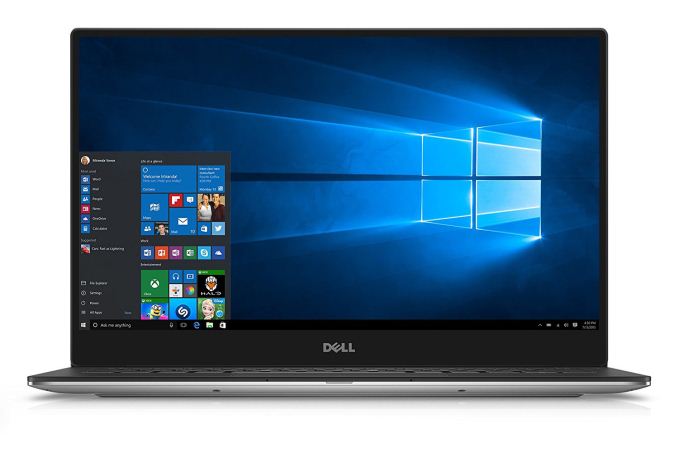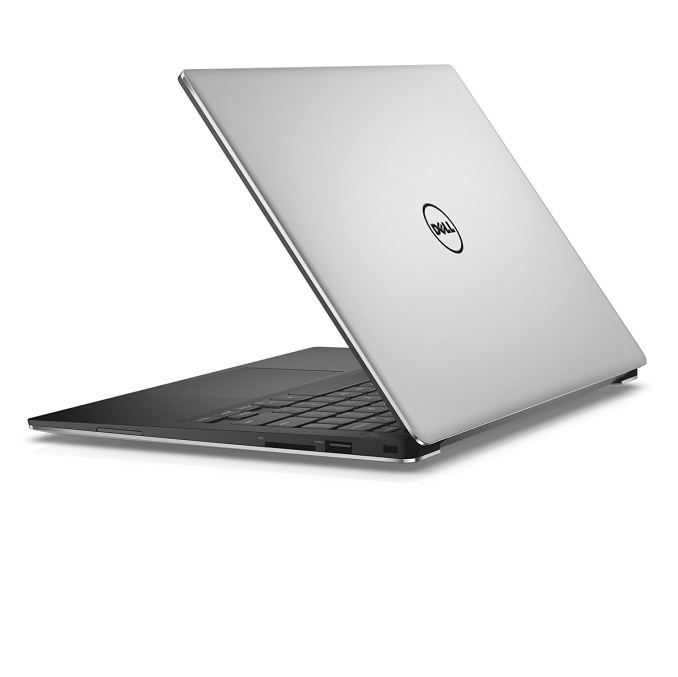Dell Updates The XPS 13 With 8th Generation Quad-Core CPUs
by Brett Howse on August 29, 2017 10:40 PM EST- Posted in
- Laptops
- Dell
- Intel
- Trade Shows
- XPS 13
- Kaby Lake
- Kaby Lake Refresh
- IFA 2017

Dell has announced it is updating the XPS 13 with the just announced 8th generation Kaby Lake refresh. While we’re still waiting for 10nm chips to launch, the latest Kaby Lake ultramobile processors are more than just a speed bump, with the latest CPUs being the first in Intel’s popular 15-Watt Core lineup to offer four cores and eight threads.
| Specifications of Intel Core i5/i7 U-series CPUs | |||||||||||
| 7th Generation | 8th Generation | ||||||||||
| Cores | Freq + Turbo |
L3 | Price | Cores | Freq + Turbo |
L3 | Price | ||||
| i7-7660U | 2/4 | 2.5/4.0 GHz | 4 MB | $415 | i7-8650U | 4/8 | 1.9/4.2 GHz | 8 MB | $409 | ||
| i7-7560U | 2.4/3.8 GHz | $415 | i7-8550U | 1.8/4.0 GHz | $409 | ||||||
| i5-7360U | 2/4 | 2.3/3.6 GHz | 3 MB | $304 | i5-8350U | 4/8 | 1.7/3.6 GHz | 6 MB | $297 | ||
| i5-7260U | 2.2/3.4 GHz | $304 | i5-8250U | 1.6/3.4 GHz | $297 | ||||||
Dell is claiming the latest XPS 13 is 44% faster than the outgoing XPS 9360, and that falls in-line with the speed bump Intel has been promising as well. Dell is making this comparison with BAPCo’s SYSmark 2014 SE, which does attempt to replicate real-world use cases, so this should be an impressive update.
Other than the new CPU, the rest of the XPS 13 stays the same, and that’s not a problem at all. The XPS 13 continues to offer both a 1920x1080 FHD model, with Dell claiming up to 22 hours of battery life, and a QHD+ model (3200x1800) with touch, that gets less. The XPS 13 is one of the smallest 13-inch notebooks around, and really pioneered the thin bezel revolution we’ve seen other manufacturers exploit as well.
The new XPS 13 with 8th Generation Intel Core processors will be available starting with the Core i7 model on September 12th starting at $1399.99, and more configurations will be available in October, which should get closer to the starting price of the i3 model at $799.99.
Source: Dell











41 Comments
View All Comments
kenansadhu - Tuesday, August 29, 2017 - link
Hi there. Can anyone tell me why they sell different processors (with one being better than the other) with the same price? I've been wondering about this for a while. Thanks!ace24 - Tuesday, August 29, 2017 - link
Lower base/boost clocks probably allow for designs that need less cooling, better battery life or both. Also, don't think OEM's actually pay the publicly listed prices -- the slower chips are almost certainly cheaper in actual negotiated pricing.twotwotwo - Wednesday, August 30, 2017 - link
On ARK the TDP, etc. for both SKUs looked the same. I like your observation about OEMs though; it totally seems plausible the public prices are only the same because they aren't the prices that matter.Rickyxds - Wednesday, August 30, 2017 - link
Monopoly! Hahaha thanks AMD for come backXZerg - Wednesday, August 30, 2017 - link
You have to look at full specs. most likely the cause would be lower power (watt) profile and thus running cooler and requiring less cooling solution. the other difference could be other features such as vpro, ...anactoraaron - Tuesday, August 29, 2017 - link
So Intel was sitting on this for how long? Content with rebadging 2 core chips with little improvement year to year because they had no competition? Thank you, AMD. Your chips will power my next few builds. Hopefully we will see widespread adoption of AMD chips in notebooks by next year.ddriver - Wednesday, August 30, 2017 - link
Not really, they had mobile quads for a while.Azune - Wednesday, August 30, 2017 - link
Not at 15 Watts though.HStewart - Wednesday, August 30, 2017 - link
Yes in dead - this is significant with almost 50% performance increase and still 15watts.This is way of future not huge monstrous CPU's that bring me back to day when I built a Pentium Pro machine.
Nozuka - Wednesday, August 30, 2017 - link
You could also blame AMD that Intel was able to slack off for years....